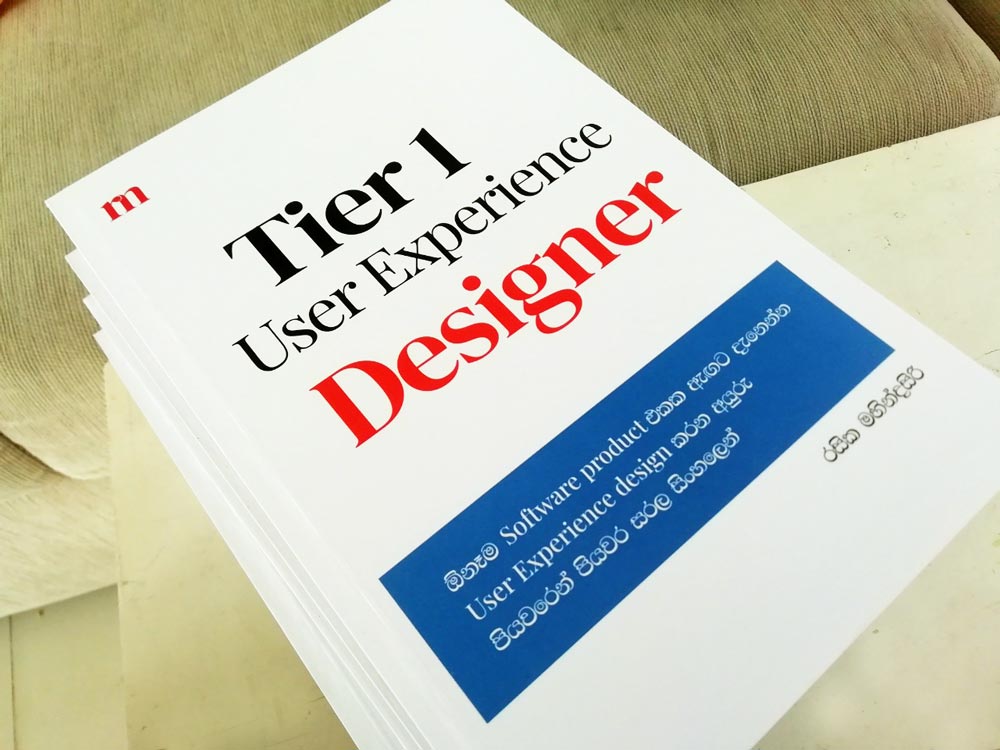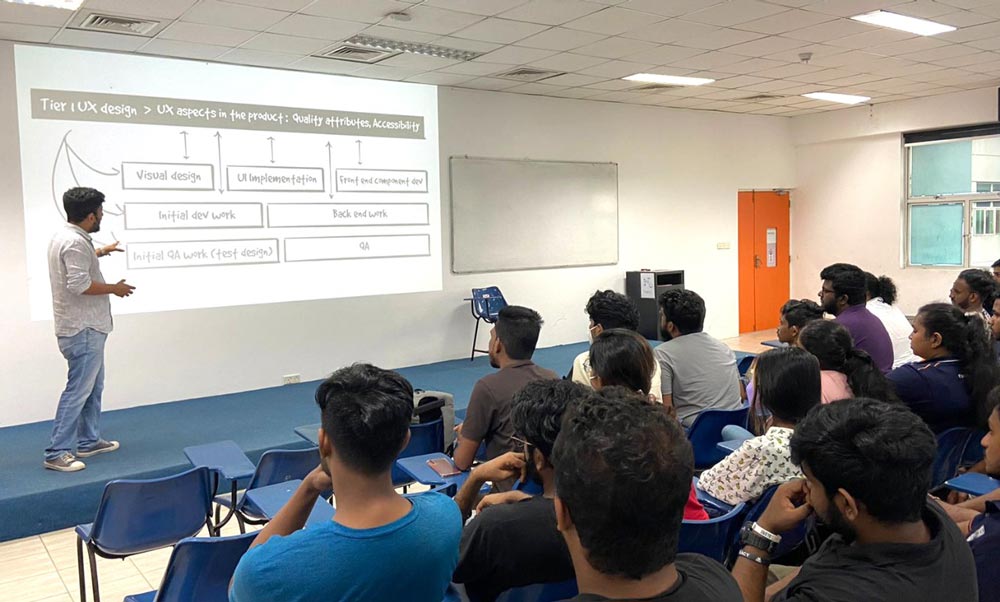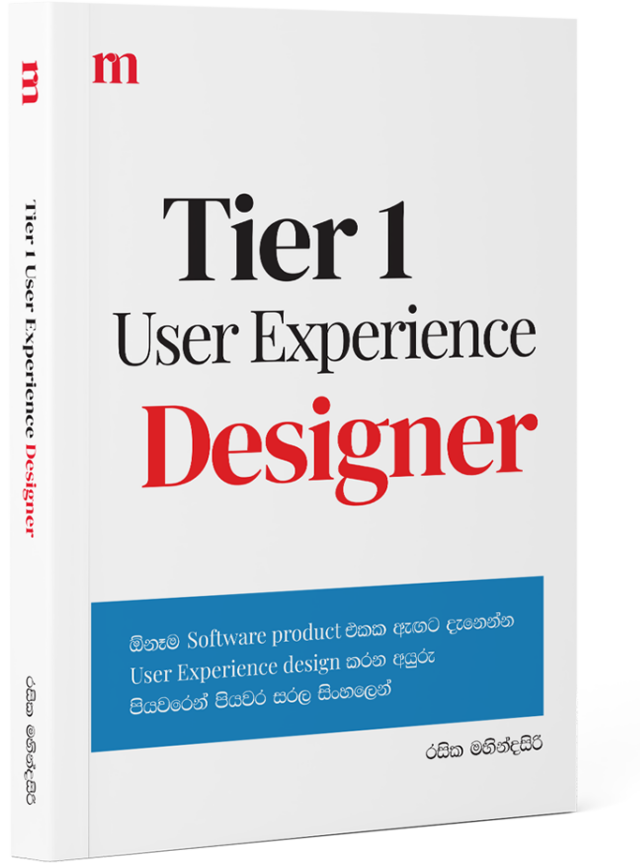
What exactly does a user experience designer do and what differentiates UI from UX? it is a very multi-faceted role and there are lots of different myths and misconceptions. Even within the industry, the definition of UX is often misunderstood and vague. UX and UI are not mutually exclusive, but not the same thing either.
One of the best ways to get everyone on the same page about UX is to get an expert to explain it. Lanka Business News got the opportunity to talk to one of the few industry experts, Mr Rasika Mahindasiri, who has enough knowledge and expertise about UX.
- Rasika, as a Software professional who has made an outstanding contribution to the industry, please tell us about your background.
All my educational qualifications are in Software Engineering and I have participated in so much professional training in Designing User Experience (UX) and Usability. And I have self-learned most of the Visual Design aspects.
With that, I started my career in 2003 as a designer. And I worked for a few organizations where I always focused myself on Software Usability and how well I can address client problems through that. At that time there was no subject called User Experience and it was all about Usability.
In 2008 I joined “99X”, which is a magnificent organization to work at, where I got so many opportunities to learn about this subject and practice more and more regarding User Experience. In 2013-2014 we started making our processes based on appropriate industry practices. By 2016-2017 we had a set of processes that would work for any Software company. There were a lot of organizations that were interested in knowing about these processes and practices, and we got the opportunity to conduct several sessions in Sri Lanka, Malaysia, and also in Singapore where the participants were amazed by our findings. Since 2008, I am working for 99X as a User Experience Expert to date.
- Out of so many avenues in the Software industry, what made you become a User Experience (UX) expert?
I chose to be a designer because I really wanted to be a designer. When I was in campus, I thought that programming is the key part of any Software application developed. So, we only focused on the development aspects of the software.
There was this project we had to deliver in our second year. So, we perfectly developed a Software using cutting edge technology and the Software was outstanding. But we did not focus on the Usability nor the user experience aspects. When we were presenting this to a set of potential clients, we were told that their problem was not solved. Though we have used the best possible techniques and technologies, no one understood how our software could solve their problem. Simply because the usability and the user experience were at a very primitive level. Our supervisor was not very happy. We were shocked to see that no one noticed the technical excellence we have delivered in the software and it really didn’t matter at that time as the Software hadn’t solved the user problem.
So that struck pretty hard on me considering the effort we have put into developing the software and the negative feedback we got. That’s where I understood how much User Experience can affect the success of an application.
- You published a book recently, named “Tier 1 User Experience Designer”. Tell us about the book and what motivated you to write it.
The main reason was that, if you take a User Experience book in the market, most of them only explain to you about User Experience targeting one type of project. For example, some books focus on Project startups and others on entrepreneurship. But there are several different types of projects we get to work in the industry such as improve User Experience in an existing product and adding new features to an existing product. Further more they don’t explain the real-world scenario, where a Project goes through different stages such as design, development and delivery; and the same happens in most of the Courses out there for User Experience. So that gap needed to be bridged. That is why we were forced to come up with our own set of Processes and practices which suit any Software Development Company or Software Project.
As I have mentioned earlier, I have explained these Processes and Practices to thousand different people, a thousand different times. Therefore, I thought that I should write everything in a book that will allow anyone interested, to read and get his/her work done.
The language I have used to write this book is somewhat informal and very casual. Because it helps the reader to understand better and on the other hand increases the effectiveness of this whole exercise. Just like the “Kuppiya” we do in Campus.

- Finding a proper UX expert in the Software industry in Sri Lanka is not easy. How will this book help overcome this concern?
The main reason behind this is lack of knowledge of what User Interface, User Experience and Usability are. Also, these three aspects are interconnected and have a very thin line between them. People have misunderstood UI/UX. They think designing an eye-catching user interface is what it is all about. So, there aren’t many people who actually understand the true meaning and the ways of doing these things in the industry.
And to make things worse, there are no proper educational mechanisms in Sri Lanka to teach UX precisely. Because, in Sri Lanka, everything is geared toward creating Software Engineers. However, in my opinion, even these Software Engineers must have a basic knowledge of User Experience design. Not only the Software Engineers but also the Organizations who obtain the service of these Engineers must know the value of UX extensively.
So, I believe this book will help people understand the differences and ways of doing UX and come out of the chaos.
- Along with your success story, there may have been so many failures and interesting incidents. Tell us about the most impactful incident you remember.
I have contributed to over 100 products all over the world. Most have been in the European region, and there have been quite a few failures.
The failure which I consider to have the biggest impact on my career happened in 2011. At that time, I was not so experienced in User Experience. But I knew about Usability which is one level below UX.
We got this project from a European client to build Software like Uber. At that time people hardly knew about Uber and how it worked. And it was like magic to me to be able to book a Taxi from my Mobile at that time. The solution and the user journey were designed by the client, which was the key to UX design. And I focused on the Interfaces and the usability of Interfaces. Unfortunately, I didn’t know that the User Journey was wrong, as it was not tested. However, the user Interfaces were spectacular and were developed using cutting edge technology. And the project was delivered perfectly. But the product was not successful in the market. The client did all sorts of different ways to get into the market. But still, it failed. And the reason given by the client was that the European market was not ready for such a product, which I also believed.
Strangely Uber was launched in the European market after six months and it was a massive success. It caught every one of us by surprise to see how Uber captured the market just six months after our product launch, which was a similar Product, and failed. We were shocked and clueless about what went wrong with our product. And then when I got a chance to compare the User Journey of both identical products, I identified one single step that we have done incorrectly. And that single step cost us everything. That was a massive failure, as we could have been the market leader and it could have been an impactful product in the society like Uber is now, had we not made that simple mistake. Sadly, I missed it.
That is the reason why I always say, User Journey is the core of any Software Product and one simple mistake will destroy the whole effort.

- As a UX expert, what are the most common challenges you face when you are working with clients?
The biggest challenge I face most of the time is the client’s knowledge about UX design. Most of the time clients say the product must be simple, easy to use and must have an attractive interface. So, making the client aware that we need to do more to deliver a better user experience, like getting that Domain information, understanding the problem and drafting a proper solution to the problem is not that easy. Because the client usually comes with a solution.
Usually, during the first few meetings, it is hard to convince the customer, that I can design a better solution than what he/she has. It is a very tricky point as I can’t say it to the client straight away. Because then I need to have thorough knowledge about the domain, clients’ business objectives and I need to know about clients’ problems better. So, I have explained all these techniques and how you do them in my book. That has to be done by all UX Designers, because, if you fail to do that, then what you are implementing is the solution that the client asks you to do, including the user journey. So, there is a high probability that the product will fail, if the client doesn’t know about User Experience.
- Since there are very limited courses on UI/UX, for anyone interested to improve their knowledge, can we expect training sessions from you in future?
Yes, it all depends on how people will react to this book. Because I have illustrated my story that is not seen in many other books. So, I am closely observing how people react to this book and see whether the industry wants this kind of book in the first place.
I surely know that there is a problem, and I want to find out whether my book is the right solution to it. So, if the industry accepts my book and if I get a demand to do more practical examples and provide guided experience, I will surely start a course around this book.
- Finally, though you may have well and truly explained this in your book, what is your message to the youngsters who are interested in UI/UX?
I always say, if you are a UX Designer, you need to understand the difference between User Interface, Usability and User Experience. If you do not understand that, you only become a pair of hands for someone else. UX Designer must be a person who can tell the problem, whom and where it will affect and how it can be solved, considering the existing solutions.
So, you need to learn this art if you need to become a UX Designer. Your designation can be anything from Software Engineer to a Project Manager to a Graphic Designer. Because it is all about designing a proper solution. That is my advice to the youngsters who are interested in UX.

BUY NOW




